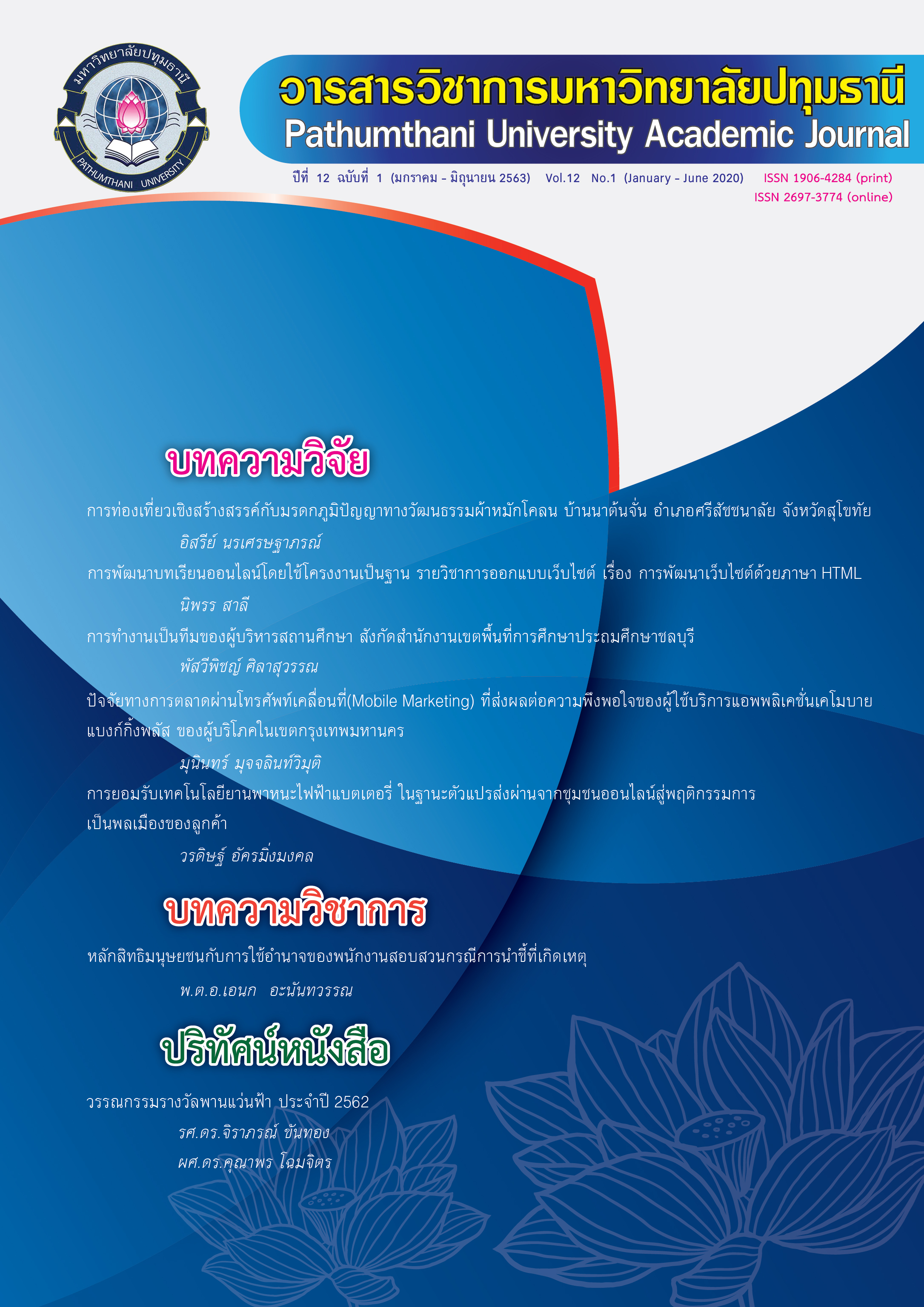BUSINESS MODEL OF THE ELDERLY CARE IN PATHUMTHANI PROVINCE
Keywords:
Business Model, the Elderly CareAbstract
This research were quantitative method aim to studies 1) services user behavior of the elderly care 2) factors lead to services user of the elderly care 3) relative between services user behavior of the elderly care and factors lead to services user of the elderly care, and 4) business model of the elderly care in Pathumthani Province, by accidental sampling random 385 respondents. The analysis was conducted by computer software, statistical treatments by program computer namely: frequency, percentage, mean, standard deviation, ranking, Pearson correlation, and multiple regression analysis Stepwise at significant statistics level at .05. Researchers found that 1.Finding indicated that overall and every area of services user behavior of the elderly care were at lower level ( = 2.52). However, the raking by mean were medical treatment area (
= 3.19) were at moderate level, rehabilitation area (
=2.51), mental area (
= 2.47), pastoral care area (
= 2.42) and social area at low level respectively. 2.Finding indicated that overall and every area of factors lead to services user of the elderly care were at moderate level (
=3.12), raking by mean first hospital for elderly area (
=3.43) senior living area (
=3.42) were at high level, elderly food area (
=2.90) at moderate level, (
=2.50), sending people to care for elderly (
=2.48), elderly recreation (
=2.46), and products for elderly at low significant level (
=2.45) respectively 3. There were moderate relationship level between overall area of services user behavior of the elderly care and factors leading to services user of the elderly care. 4.business model of the elderly Care in Pathumthani Province = .58 sending people to care for elderly +.56 nursing home area +.38 senior living area +.31 hospital for elderly area +.25 elderly food area +.13 elderly recreation +.07 products for elderly business area
References
สัณห์ทัย สงวนศักดิ์ (2550) .ปัจจัยสำคัญที่ส่งผลต่อการสร้างประสิทธิผลของการนำนโยบาย ส่งเสริมสังคมแก่ผู้สูงอายุไปปฏิบัติ: ศึกษากรณีกรุงเทพมหานคร. วิทยานิพนธ์ปริญญารัฐประศาสนศาสตรมหาบัณฑิต. มหาวิทยาลัยรามคำแหง.
Gum and other (2006,). “Depression Treatment Preferences in Older Primary Care Patients”. Journal of Nursing Research. Pp : 14-22.
Harrison, R.(1996). “Action learning : Route or barrier to the learning organization?” The Journal of Workplace Learning. Vol. 8 : 27-38.
Moschis (2003). Marketing to Older Adult: an Update Overview of Present Knowledge and Practice. New York: Macmillan
Srithamrongsawat, Bundhamcharoen, Sasat, Odton and Ratkjaroenkhajorn (2009). Forecasting demand and costs for elderly care in a facility in the country of Thailand. International program. Mahidol University.
Yap, Au, Aug, Kwan, Ng and Ee (2003) .Nursing Home Nature of Nursing Home Residents. . New York: Mcgraw-Hill.
Downloads
Published
How to Cite
Issue
Section
License
บทความที่ได้รับการตีพิมพ์เป็นลิขสิทธิ์ของวารสารมหาวิทยาลัยปทุมธานี
ข้อความที่ปรากฎในบทความแต่ละเรื่อง เป็นความคิดเห็นส่วนตัวของผู้เขียน กองบรรณาธิการไม่จำเป็นต้องเห็นด้วยเสมอไป และไม่มีส่วนรับผิดชอบใด ๆ ถือเป็นความรับผิดชอบของผู้เขียนแต่เพียงผู้เดียว



